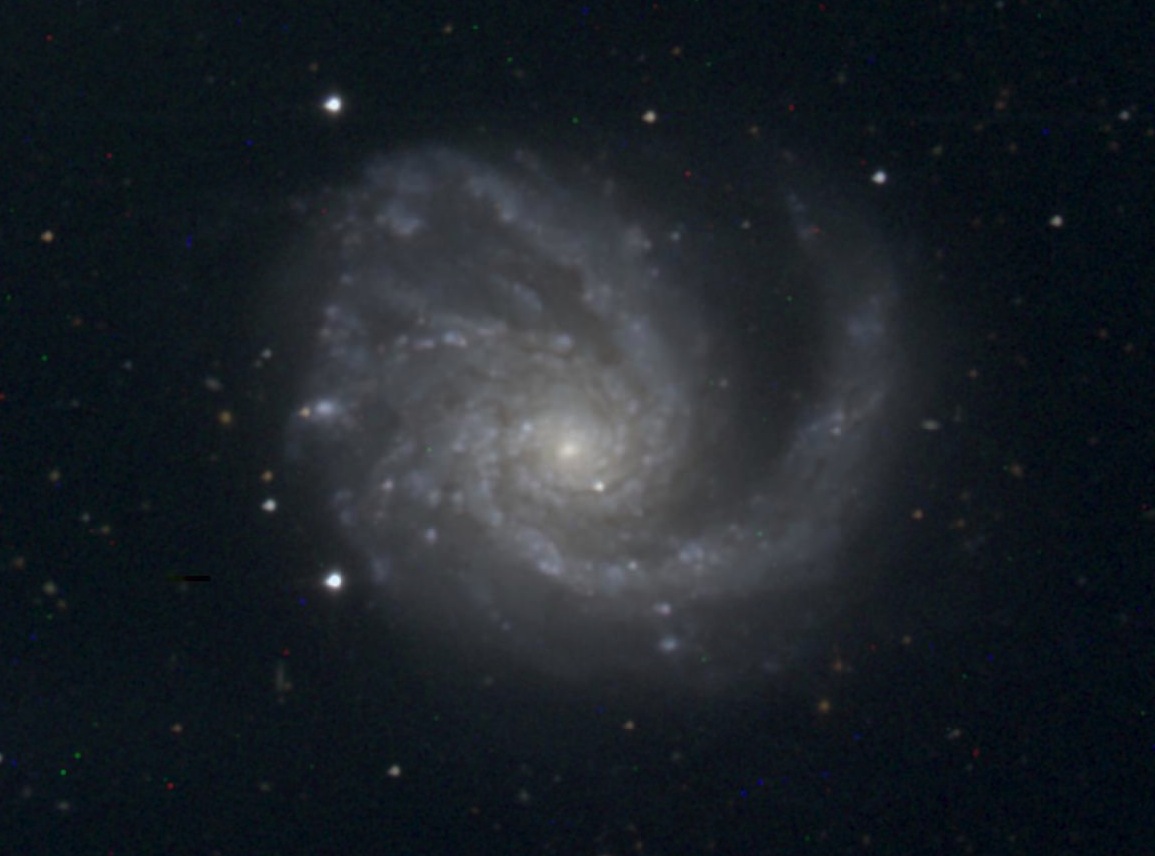Spiral galaxy M99 = NGC 4254
 This color-composite CCD image shows the bright, attractive spiral galaxy M99
(NGC 4254) in Virgo. This galaxy is an advertisement for how asymmetric
spiral galaxies can be for no obvious reason; the single strong arm
on the west side stands in contrast to the multiple arms on the
other side of the disk. It has no especially close neighbors in the
Virgo cluster, so tidal distortion is not a very attarctive explanation.
There may be several interesting questions here- how does a galaxy become
asymmetric, is the asymmetry only a function of the gas distribution
driving star formation, and how long can such a structure remain without
being smeared out by the galaxy's dynamics? Even for a galaxy of such late
Hubble type, one can see a strong color contrast between the bulge and arms.
This color-composite CCD image shows the bright, attractive spiral galaxy M99
(NGC 4254) in Virgo. This galaxy is an advertisement for how asymmetric
spiral galaxies can be for no obvious reason; the single strong arm
on the west side stands in contrast to the multiple arms on the
other side of the disk. It has no especially close neighbors in the
Virgo cluster, so tidal distortion is not a very attarctive explanation.
There may be several interesting questions here- how does a galaxy become
asymmetric, is the asymmetry only a function of the gas distribution
driving star formation, and how long can such a structure remain without
being smeared out by the galaxy's dynamics? Even for a galaxy of such late
Hubble type, one can see a strong color contrast between the bulge and arms.
This color composite is from B and R images (with synthetic V)
taken during twilight with a Tektronix 2048x2048
CCD at the 2.1-meter telescope of
Kitt Peak
National Observatory, by Bill Keel and Lisa Frattare. North is at the
top and east to the left,
for direct comparison with a chart or eyepiece view.
The image has been block-averaged by a factor of 2 for
this presentation, which uses a logarithmic intensity transformation to
preserve information across a wide dynamic range, and further averaged 2x
as shown above (click to see it in full size). The field is 9.3 arcminutes
on a side.
M99 was the host of supernova 2014L, seen just southwest of the nucleus
in the image below from
January 2014. It was taken with the 1-meter SARA telescope on Kitt Peak.

Messier gallery |
Image gallery |
UA Astronomy |
Bill Keel's home page
wkeel@ua.edu
Last changes: 9/2018 © 2003-2018


